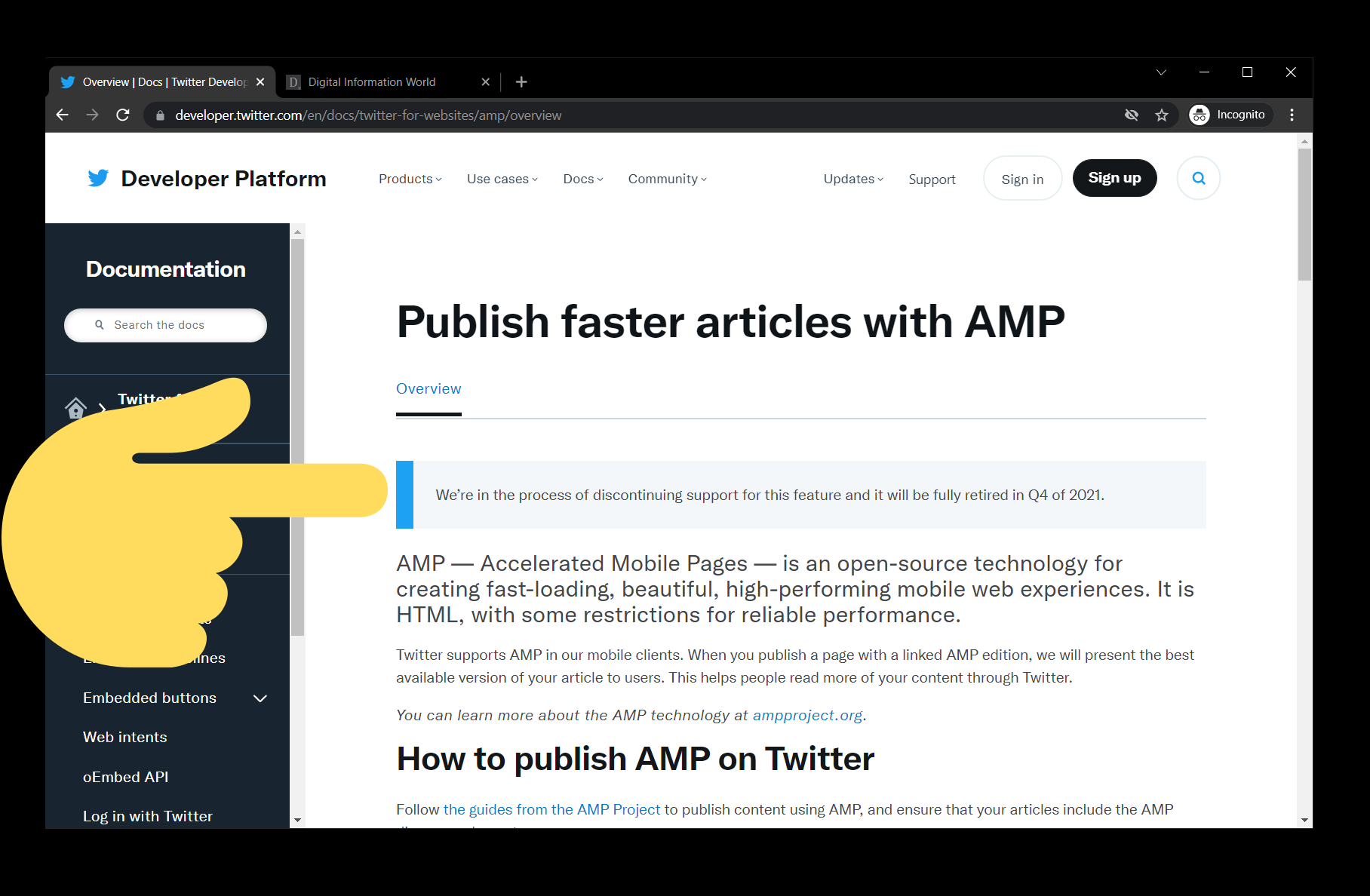Technology is advancing, changing and evolving at a rapid speed and all social applications are making sure to adapt well to it. Companies introduce features and tools, keep it for a while and if they believe that an alternate of it will be more appropriate soon shift to it then. The same goes for the step Twitter took recently.
Twitter one of the most used social media applications in the world has taken an approach towards an anti AMP trend. Previously while users when clicked on a link in a website to read a particular article saw a pop up screen directly on Twitter.
However, this may be changing now. The company announced that users will now experience the regular version of articles when they tap on a link through the app on iOS or Android. Twitter previously had a statement which encouraged users to publish faster articles with AMP. The particular article recently saw an update where the tech firm had updated users that it will soon be removing the support for it.
While previously the social giant wanted to give users a great experience of reading through articles and content from a different website without going off from Twitter, some circumstances led them to back off from this decision. A lot of factors were involved which led Twitter to take this decision.
The factors included points like many users being annoyed with the URL formatting AMP had or the fact that the AMP accessibility though was great in terms of not leaving the app, it in many cases did not give full access to articles on many websites through AMP.
The AMP support will discontinue soon and users will experience full being led to full Google pages and website URLs whenever they tap on a link on Twitter. This new update will go live in the fourth quarter of 2021 and after that AMP will permanently leave Twitter.
A lot of users already have lost access to AMP.
Google in this case while may be happy because more users will be directed to its search engine, it honestly isn’t really that concerned. All the tech firm wants, is to have a proper page experience metrics and it’s all happy to get that.
Read next: Twitter is updating better insights on its Tweets and will release the new Tweet Analytics Display in mid-December
Twitter one of the most used social media applications in the world has taken an approach towards an anti AMP trend. Previously while users when clicked on a link in a website to read a particular article saw a pop up screen directly on Twitter.
However, this may be changing now. The company announced that users will now experience the regular version of articles when they tap on a link through the app on iOS or Android. Twitter previously had a statement which encouraged users to publish faster articles with AMP. The particular article recently saw an update where the tech firm had updated users that it will soon be removing the support for it.
While previously the social giant wanted to give users a great experience of reading through articles and content from a different website without going off from Twitter, some circumstances led them to back off from this decision. A lot of factors were involved which led Twitter to take this decision.
The factors included points like many users being annoyed with the URL formatting AMP had or the fact that the AMP accessibility though was great in terms of not leaving the app, it in many cases did not give full access to articles on many websites through AMP.
The AMP support will discontinue soon and users will experience full being led to full Google pages and website URLs whenever they tap on a link on Twitter. This new update will go live in the fourth quarter of 2021 and after that AMP will permanently leave Twitter.
A lot of users already have lost access to AMP.
Google in this case while may be happy because more users will be directed to its search engine, it honestly isn’t really that concerned. All the tech firm wants, is to have a proper page experience metrics and it’s all happy to get that.
Read next: Twitter is updating better insights on its Tweets and will release the new Tweet Analytics Display in mid-December

